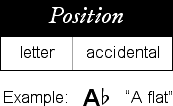
Staff positions are labeled using letters and signs. Signs used in this way are called accidentals.

The spoken and written forms are the same from left to right. For example, accidentals of G are shown in the table below, with spoken equivalents given below each label.

All combinations of a given letter with various accidentals refer to different staff positions. When applied to the same letter, seven accidentals correspond to seven positions differing by ± 117 cent increments, as shown in the table below.
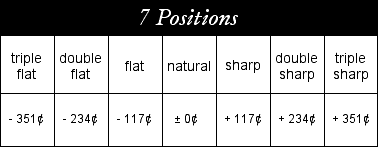
Signs are not shown in the table above, because positions which are called flat or sharp, etc. do not in fact include signs written on the staff. Instead, accidentals correspond to successively higher or lower positions above or below a given natural position. Therefore, the natural positions should be mastered before accidental positions are learned. Accidentals surround naturals in increments of four staff positions, as shown below.

Two examples are given below, for sharp accidentals of G and flat accidentals of D.


Each natural note position may be seen as the center of a consistent pattern of seven positions, as the following figure illustrates.

Once the natural staff positions have been learned, the positions corresponding to accidentals are easily learned by applying this consistent pattern. Below, positions corresponding to accidentals are shown for the natural notes on the treble staff.
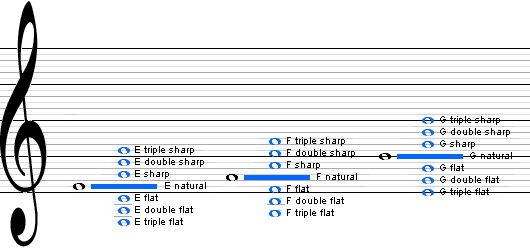
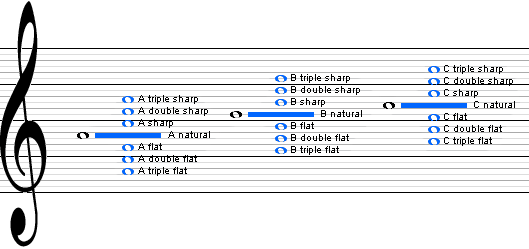

This pattern is given below for all accidentals of B on a bass clef, followed by notation of all accidentals of B.
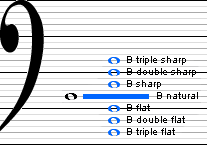
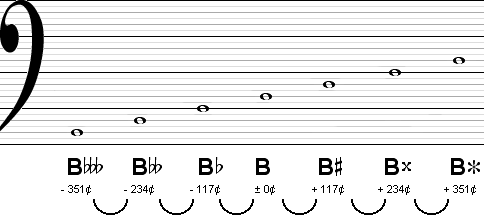
Sharps and flats usually correspond to positions which neighbor one another on the staff. Sometimes these positions neighbor natural positions. Neighboring pairs of sharps and flats, sharps and naturals, and flats and naturals are shown below on a treble staff. Each pair of notes differs in pitch roughly by a comma.

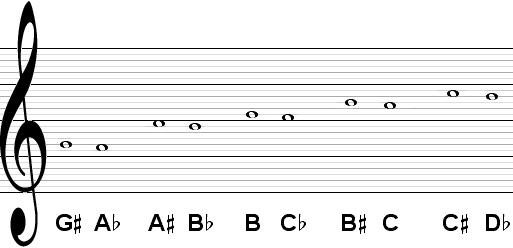
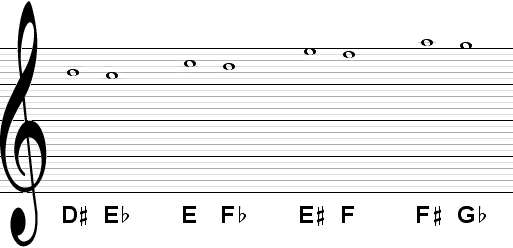
Double sharps and double flats usually correspond to positions which neighbor natural positions on the staff. Sometimes these positions neighbor sharp or flat positions. Neighboring pairs of double sharps and naturals, double flats and naturals, double sharps and sharps, and double flats and flats are shown below on a treble staff. Again, the notes of each set differ from one another in pitch roughly by a comma.
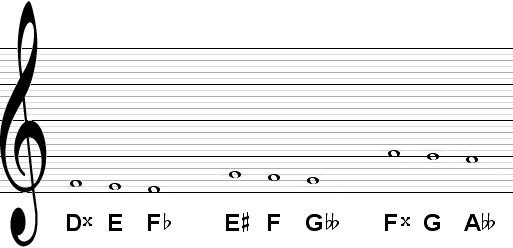


The triple accidentals of 351 cents above and below natural notes lead to overlapping positions exactly halfway between two notes which are a fifth (702 cents) apart. In other words, chromatic alterations of natural notes divide the interval of a fifth into six equal parts with two overlapping labels for positions in the middle. Positions having overlapping labels are called enharmonic. There are eight enharmonic positions, as shown in the following examples on the treble staff.

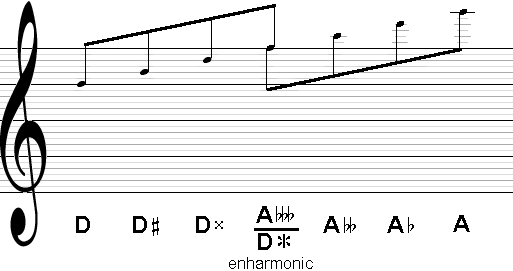

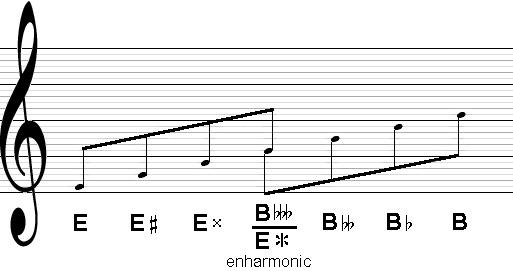
Note that the interval from B to F shows two overlapping enharmonic positions.


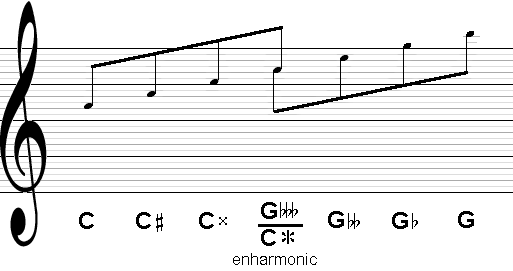
Seven positions for each of seven letters results in a total of 49 positions for all accidentals, as shown in the table below.
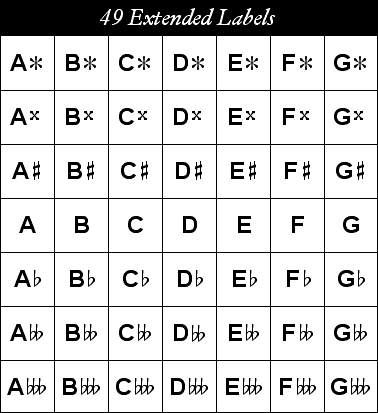
As demonstrated in the section on triple accidentals above, there are eight enharmonic positions. For all letters and accidentals, 49 labels including enharmonics, there are 41 unique positions, as shown in the circle below.
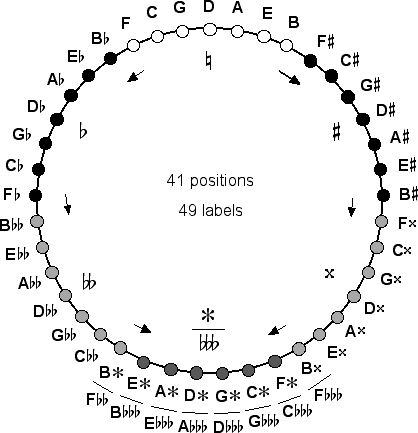
NOTE: As a result of this chain of fifths basis, sharps are higher than neighboring flats, double sharps are higher than neighboring naturals, and double flats are lower than neighboring naturals. These relationships correspond to the implications of early Western music theory; however, during a slightly later period of Western history, all of these relationships were reversed. For several centuries, sharps were lower in pitch than neighboring flats, double sharps were lower than neighboring naturals, and double flats were higher than neighboring naturals. These reverse relationship are easily shown by using enharmonic shifts.
NEXT: Shifts